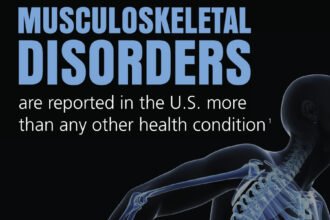Last year over 300 million 9-1-1 calls were made in the US. What if yo
Last year over 300 million 9-1-1 calls were made in the US. What if you or a loved one had to call 9-1-1 today? Would dispatchers know where you were, or what was wrong? How can you ensure that they can find you and help you quickly?
If an incoming 9-1-1 call is made from a landline, dispatchers are given the phone number and the address. However, if the call is made on a mobile phone, dispatchers only see the number and a general location (GPS coordinates give a general location). And if you’re calling from inside a building, they may only get the building location, but not your specific location.
So what information does 9-1-1 need on your incoming call? Your location to start. Even if they can’t determine the details of the emergency they know where to send response teams. But what if you can’t communicate, or have fallen unconscious and the call is silent? You would want 9-1-1 to have as much information as possible in order to send the appropriate response teams as fast as possible.
But what if you’re not the caller? What if it’s a child, grandchild, elderly parent or family member with a disability? You would want them to receive the same level of care. While mobile technology is constantly advancing, 9-1-1 technology has not adapted as quickly. But there are ways to ensure that you and your loves ones are protected in the event of an emergency.
Smart911 is currently being used in over 20 states in the US for this exact purpose. The free service allows you to create a Safety Profile of information (through www.smart911.com ) for your family that is made available to 9-1-1 and response teams when an emergency call is made. The profile can contain as much information as each you would like 9-1-1 to have, and includes specific pieces of data such as individual family members, their photos, medical conditions or medications and rescue notes. It can include pets or service animals, household details such as bedroom locations or access points and even emergency contacts. And it solves the problem of locating an emergency call by listing mobile phone numbers along with home and work addresses.
Once the profile is created, it can be changed or updated at any time and it’s completely private and secure. The only time anyone, other than the profile owner, can view it is when a 9-1-1 call is made.
This kind of information could make a significant difference in an emergency. If an elderly family member experiences a heart attack, stroke or other episode, if they dial 9-1-1 and can’t communicate, response teams know where to respond to and have the person’s medical notes so they begin to plan treatment methods in route.
What if your child went missing? As soon as you dial 9-1-1, their photo and physical description would be available to teams in the field, saving valuable minutes.
While out driving one day, you are in a car accident. You may be knocked unconscious, but your child dials 9-1-1. They would have your vehicle information and a GPS location of the incident, taking the pressure off of your child to convey those details.
While this service isn’t available in every city yet, more locations are being added this month. And you can create your safety profile at anytime. It is a national system so if you are ever in an area with active service and need to dial 9-1-1, your profile will appear. If you are a caregiver of another family member, this service can help ensure that if there is an emergency that person will be cared for and you can be notified if and when they dial 9-1-1.
It’s also a good idea to create a profile and have an understanding of the details emergency workers need, and talk to your family about that information so that everyone can be better prepared. While you can never anticipate an emergency, you can have peace of mind that you are prepared for one.






